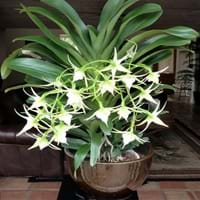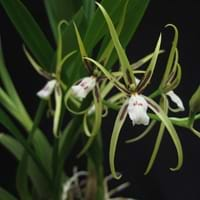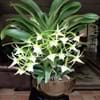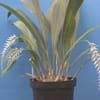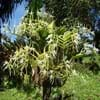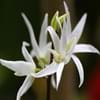Life Span
Perennial
Perennial
Origin
South America
Mexico
Types
A. s. var. angustifolium,A. s. var. sesquipedale
Bigleaf hydrangea, Hortensia, Smooth hydrangea, Oakleaf hydrangea, Annabelle
Number of Varieties
Not Available
Habitat
Coastal Regions, Lowland
Forest edges, Hillside, Woods
USDA Hardiness Zone
10-15
10-13
Sunset Zone
H1, H2, 22, 23, 24
H1, H2
Habit
Clump-Forming
Clump-Forming
Flower Color
White, Yellow, Fuchsia, Lavender
Light Yellow, Burgundy, Dark Red, Olive, Ivory
Flower Color Modifier
Multi-Color
Multi-Color
Fruit Color
Not Available
Not Available
Leaf Color in Spring
Green, Light Green
Green
Leaf Color in Summer
Green, Light Green
Green
Leaf Color in Fall
Green, Light Green
Green
Leaf Color in Winter
Green, Light Green, Gray Green
Green
Leaf Shape
Bi-lobed
Oblovate
Plant Season
Fall, Winter
Spring, Summer
Sunlight
Partial Sun, Partial shade
Partial Sun, Partial shade
Type of Soil
Not Available
Not Available
The pH of Soil
Not Available
Not Available
Soil Drainage
Well drained
Well drained
Bloom Time
Late Fall, Early Winter, Winter
Late Spring, Early Summer, Summer, Late Summer
Tolerances
Not Available
Not Available
Where to Plant?
Container, Ground, Pot
Container, Ground
How to Plant?
Seedlings
Seedlings, Stem Planting
Plant Maintenance
Medium
Medium
Watering Requirements
Keep ground moist, Keep the Soil well drained, Requires regular watering
Not Available
In Summer
Lots of watering
Average Water
In Spring
Moderate
Moderate
In Winter
Average Water
Average Water
Soil pH
Not Available
Not Available
Soil Type
Not Available
Not Available
Soil Drainage Capacity
Well drained
Well drained
Sun Exposure
Partial Sun, Partial shade
Partial Sun, Partial shade
Pruning
Prune prior to new growth, Prune to stimulate growth, Remove short branches, Remove short twigs, Remove wet foliage
Remove damaged leaves, Remove dead branches, Remove dead leaves
Fertilizers
All-Purpose Liquid Fertilizer
All-Purpose Liquid Fertilizer
Pests and Diseases
Beetles, Root rot, Slugs, Snails
Red blotch
Plant Tolerance
Not Available
Not Available
Flower Petal Number
Single
Single
Foliage Texture
Coarse
Coarse
Foliage Sheen
Matte
Matte
Attracts
Butterflies, Flying insects, Not Available, pollinators
Not Available
Allergy
Not Available
Chest tightness, Diarrhea, Dizziness, Nausea, Vomiting
Aesthetic Uses
Beautification, Cut Flowers, Decorating walls, Showy Purposes, Used for decorating walls, fences, gates, hedges, etc.
Not Available
Beauty Benefits
Not Available
Not Available
Edible Uses
No
Not Available
Environmental Uses
Air purification
Air purification
Medicinal Uses
Not Available
Fever, Kidney problems, Urinary tract problems
Part of Plant Used
Flowers, Seeds
Flowers, Root
Other Uses
Cut Flowers, Decoration Purposes, Making Perfumes, Used as Ornamental plant
Not Available
Used As Indoor Plant
Yes
Not Available
Used As Outdoor Plant
Yes
Yes
Garden Design
Container, Feature Plant, Houseplant, Mixed Border
Container, Feature Plant, Hanging Basket, Houseplant, Tropical
Botanical Name
Angraecum sesquipedale
BRASSIA signata
Common Name
Darwin's orchid, Christmas orchid, Star of Bethlehem orchid, and King of the Angraecums
Brassia, Marked Brassia, Marked Spider Orchid
In Hindi
क्रिसमस स्टार आर्किड
Hydrangea
In German
Weihnachtsstern Orchidee
Hortensie
In French
Noël orchidée étoiles
Hortensia
In Spanish
Orquídea estrella de Navidad
Hortensia
In Greek
Χριστούγεννα ορχιδέα αστέρων
υδραγεία
In Portuguese
Orquídea estrela do Natal
Hortênsia
In Polish
Gwiazda Betlejemska storczyków
Hortensja
In Latin
क्रिसमस स्टार आर्किड
Hibiscus
Phylum
Tracheophyta
Not Available
Class
Equisetopsida
Not Available
Order
Asparagales
Not Available
Family
Orchidaceae
Orchidaceae
Genus
Angraecum
Not Available
Clade
Angiosperms, Monocots
Not Available
Tribe
Vandeae
Not Available
Subfamily
Epidendroideae
Not Available
Number of Species
Not Available
Season and Care of Christmas Star Orchid and Brassia
Season and care of Christmas Star Orchid and Brassia is important to know. While considering everything about Christmas Star Orchid and Brassia Care, growing season is an essential factor. Christmas Star Orchid season is Fall and Winter and Brassia season is Fall and Winter. The type of soil for Christmas Star Orchid is Not Available and for Brassia is Not Available while the PH of soil for Christmas Star Orchid is Not Available and for Brassia is Not Available.
Christmas Star Orchid and Brassia Physical Information
Christmas Star Orchid and Brassia physical information is very important for comparison. Christmas Star Orchid height is 30.50 cm and width 35.60 cm whereas Brassia height is 48.25 cm and width 45.70 cm. The color specification of Christmas Star Orchid and Brassia are as follows:
Christmas Star Orchid flower color: White, Yellow, Fuchsia and Lavender
Christmas Star Orchid leaf color: Green and Light Green
Brassia flower color: Light Yellow, Burgundy, Dark Red, Olive and Ivory
- Brassia leaf color: Green
Care of Christmas Star Orchid and Brassia
Care of Christmas Star Orchid and Brassia include pruning, fertilizers, watering etc. Christmas Star Orchid pruning is done Prune prior to new growth, Prune to stimulate growth, Remove short branches, Remove short twigs and Remove wet foliage and Brassia pruning is done Remove damaged leaves, Remove dead branches and Remove dead leaves. In summer Christmas Star Orchid needs Lots of watering and in winter, it needs Average Water. Whereas, in summer Brassia needs Average Water and in winter, it needs Average Water.
